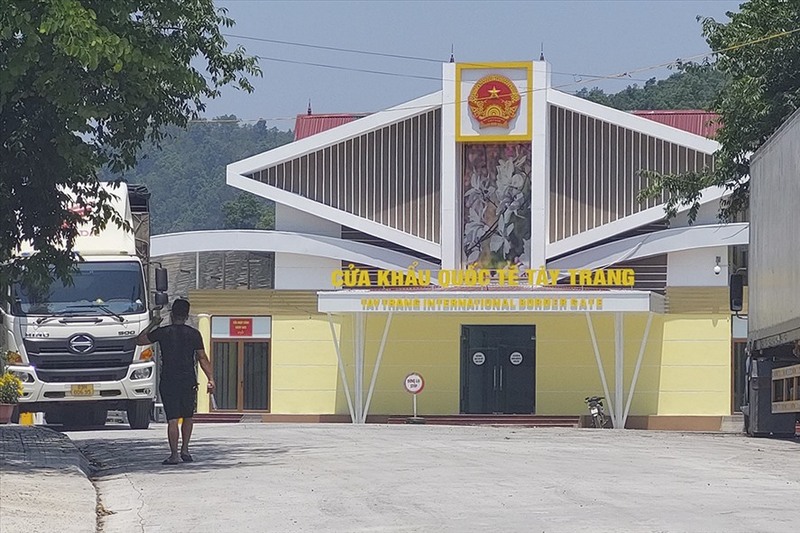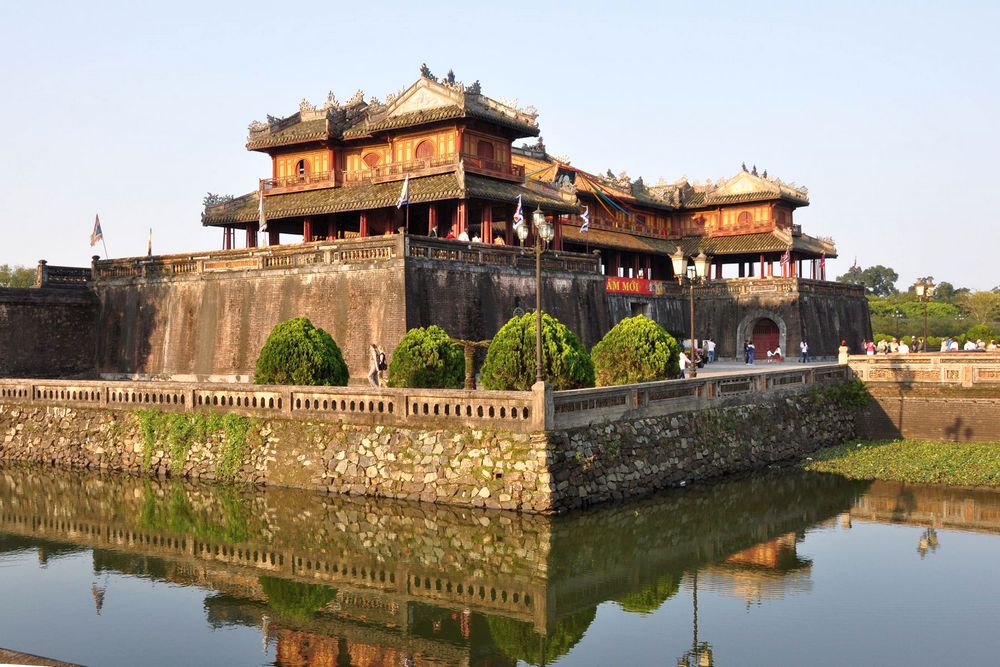Laos – Vietnam Border Crossings: A Comprehensive Guide
If you’re planning a trip to Southeast Asia, chances are you’ll want to visit both Laos and Vietnam. These two neighboring countries offer stunning landscapes, rich cultures, and delicious food. And luckily, crossing the border between them is relatively easy. In this guide, we’ll go over everything you need to know about Laos – Vietnam border crossings, from visa requirements to transportation options and safety tips.
Planning Your Trip
Before we dive into the specifics of border crossings, let’s talk about planning your trip. The first thing you’ll need to do is decide which cities or regions in Laos and Vietnam you want to visit. This will help determine which border crossing is most convenient for you. Some popular destinations in Laos include Luang Prabang, Vientiane, and the 4,000 Islands. In Vietnam, top spots include Hanoi, Ho Chi Minh City, and Ha Long Bay.
Once you have an idea of where you want to go, it’s time to start researching transportation options. You can fly into major cities in both Laos and Vietnam, but if you’re on a budget, taking buses or trains may be a better option. It’s also important to consider the time of year you’ll be traveling, as weather conditions can affect transportation schedules.
Visa Requirements
One of the most important things to consider when planning a trip to Laos and Vietnam is visa requirements. Depending on your nationality, you may need to obtain a visa before entering either country. Here’s a breakdown of the visa requirements for both Laos and Vietnam:
Laos
Citizens of most countries can obtain a visa on arrival at major airports and land border crossings in Laos. This visa is valid for 30 days and costs between $30-42 USD, depending on your nationality. However, if you plan on staying in Laos for longer than 30 days, you’ll need to apply for a visa at a Lao embassy or consulate before your trip.
Vietnam
Visa requirements for Vietnam are a bit more complicated. Citizens of some countries, including the Japanese and most European countries, can enter Vietnam without a visa for stays of up to 45 days. However, if you plan on staying longer than 45 days, you’ll need to obtain a visa before your trip. This can be done online through the Vietnamese government’s e-visa system, or by applying for a visa at a Vietnamese embassy or consulate.
Which Border Crossings Are There?
There are several border crossings between Laos and Vietnam, but not all of them are open to foreigners. Here are the main ones you’ll likely encounter:
- Lao Bao – Dansavanh: This is the most popular border crossing between Laos and Vietnam. It connects the Vietnamese city of Lao Bao with the Lao town of Dansavanh. This crossing is open to foreigners and is a convenient option if you’re traveling between Hue in Vietnam and Savannakhet in Laos.
- Nam Phao – Cau Treo: This border crossing connects the Vietnamese city of Dong Ha with the Lao town of Lak Sao. It’s open to foreigners and is a good option if you’re traveling between Hanoi and Vientiane.
- Na Meo – Nam Xoi: This crossing connects the Vietnamese town of Na Meo with the Lao town of Nam Xoi. It’s open to foreigners and is a good option if you’re traveling between Hanoi and Luang Prabang.
- Tay Trang – Sop Hun: This is the only official border crossing between Laos and Vietnam that’s not open to foreigners. It connects the Vietnamese town of Dien Bien Phu with the Lao town of Muang Khua. If you want to cross here, you’ll need to obtain a special permit from the Vietnamese government.
How Do You Cross the Border?
Now that you know which border crossings are available, let’s talk about how to actually cross the border. The process is fairly straightforward, but there are a few things to keep in mind:
- Make sure you have all necessary documents: This includes your passport, visa (if required), and any other relevant travel documents.
- Prepare for long wait times: Border crossings can get busy, especially during peak travel season. Be prepared to wait in line for a while.
- Have local currency on hand: You may need to pay small fees at the border, so it’s a good idea to have some local currency with you.
- Follow instructions from border officials: When crossing the border, be sure to follow any instructions given by border officials. This will help ensure a smooth and hassle-free experience.
Once you’ve crossed the border, you’ll need to go through immigration and customs on the other side. This usually involves filling out a form and having your passport stamped. After that, you’re officially in Laos or Vietnam!
Transportation Options
There are several transportation options for getting around Laos and Vietnam, including buses, trains, and flights. Here’s a breakdown of each option:
Buses
Buses are the most popular mode of transportation for budget travelers in Southeast Asia. They’re cheap, relatively comfortable, and offer routes to most major cities and towns in both Laos and Vietnam. However, be aware that bus schedules can be unpredictable and buses may not always be in the best condition.
Trains
Trains are a more comfortable and reliable option than buses, but they’re also more expensive. In Vietnam, the main train line runs between Hanoi and Ho Chi Minh City, with stops in major cities along the way. In Laos, there is only one train line, which runs between the capital city of Vientiane and the town of Tha Naleng.
Flights
If you’re short on time or want to avoid long bus or train rides, flying is a good option. There are several domestic airlines in both Laos and Vietnam that offer flights between major cities. However, be aware that flights can be more expensive than other modes of transportation.
Accommodation
When it comes to accommodation in Laos and Vietnam, you’ll find a range of options to suit every budget. In larger cities and tourist hotspots, you’ll find everything from luxury hotels to budget hostels. In smaller towns and rural areas, guesthouses and homestays are more common.
If you’re on a tight budget, staying in dorm-style accommodations or booking a private room in a hostel is your best bet. If you have a bit more to spend, there are plenty of mid-range hotels and resorts available. And if you’re looking for a luxurious experience, you won’t have trouble finding high-end hotels and resorts in popular tourist destinations.
Food and Drink
One of the highlights of traveling in Southeast Asia is trying the delicious local cuisine. In Laos, you’ll find a mix of Lao, Thai, and Vietnamese influences in dishes like sticky rice, papaya salad, and larb (a spicy meat salad). In Vietnam, you’ll find a wide variety of dishes, including pho (noodle soup), banh mi (sandwiches), and fresh spring rolls.
Both countries also have a thriving street food scene, so don’t be afraid to try some of the local delicacies from food stalls and markets. Just make sure to choose vendors with clean and hygienic practices.
As for drinks, beer is the most popular alcoholic beverage in both Laos and Vietnam. In Laos, Beerlao is the national beer and is widely available. In Vietnam, you’ll find a variety of local beers, as well as international brands like Heineken and Tiger.
Things to Do
There’s no shortage of things to do in Laos and Vietnam. Here are just a few suggestions:
Laos
- Visit the ancient city of Luang Prabang: This UNESCO World Heritage Site is known for its beautiful temples, French colonial architecture, and stunning natural scenery.
- Go tubing in Vang Vieng: This small town is famous for its laid-back atmosphere and river tubing activities.
- Explore the 4,000 Islands: Located in southern Laos, this area is made up of thousands of small islands in the Mekong River. It’s a great place to relax and enjoy the slow pace of life.
Vietnam
- Take a cruise in Ha Long Bay: This stunning bay is home to thousands of limestone islands and is a must-visit for any trip to Vietnam.
- Explore Hoi An’s Old Town: This charming town is known for its well-preserved ancient buildings and lantern-lit streets.
- Trek through Sapa: Located in northern Vietnam, Sapa is a popular destination for hiking and exploring the countryside.
Safety Tips
As with any trip, it’s important to take precautions to ensure your safety while traveling in Laos and Vietnam. Here are a few tips to keep in mind:
- Be aware of your surroundings: Both Laos and Vietnam are generally safe countries, but it’s always a good idea to be aware of your surroundings and avoid walking alone at night.
- Protect yourself from mosquitoes: Mosquito-borne illnesses like dengue fever and malaria are present in both Laos and Vietnam. Make sure to use insect repellent and wear long sleeves and pants when possible.
- Be cautious when crossing the street: Traffic in Southeast Asia can be chaotic, so be extra careful when crossing the street. Look both ways and try to cross with a group of locals if possible.
Additional Information
- Language: The official language of Laos is Lao, while the official language of Vietnam is Vietnamese. English is widely spoken in tourist areas in both countries.
- Currency: The currency in Laos is the Lao kip, while the currency in Vietnam is the Vietnamese dong. Both countries also accept US dollars in major tourist areas.
- Time Zone: Laos and Vietnam are both in the Indochina Time Zone (ICT), which is GMT+7.
Conclusion
Crossing the border between Laos and Vietnam may seem daunting at first, but with the right information and preparation, it can be a smooth and enjoyable experience. From visa requirements to transportation options and things to do, this guide has covered everything you need to know to plan your trip. So pack your bags, grab your passport, and get ready for an unforgettable journey through these two beautiful countries.





